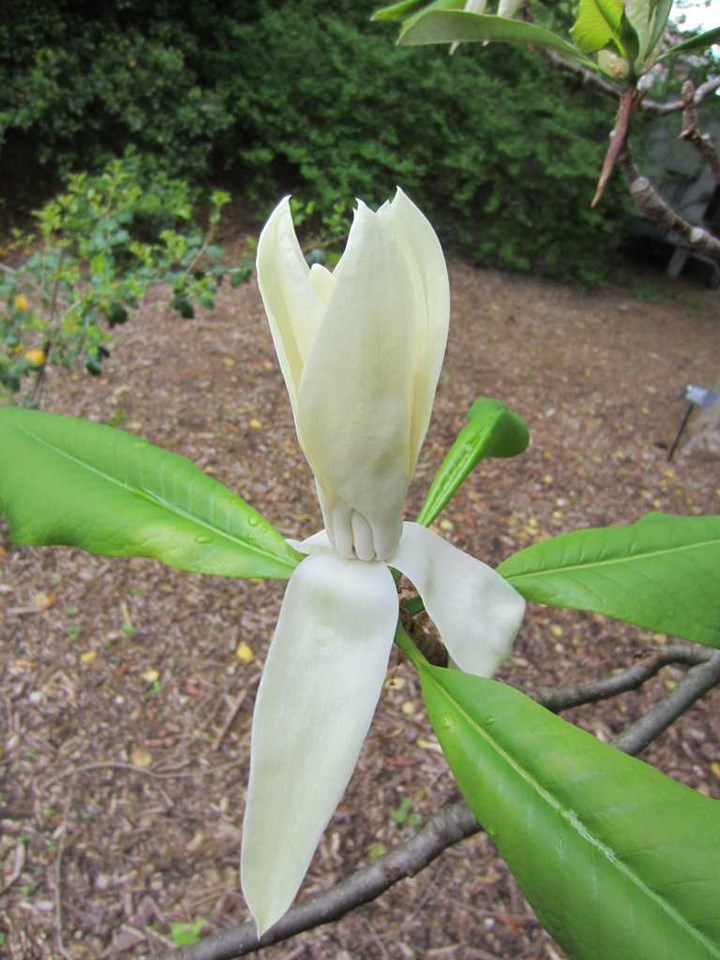Whitebark magnolia (Magnolia obovata)
Whitebark magnolia
Magnolia obovata, commonly called Japanese bigleaf magnolia, white bark magnolia or white leaf magnolia, is a large-leaved deciduous tree that typically matures to 25-40’ tall with a spread to 25’ wide. It is native to mixed broadleaf forests from sea level to 6000’ in Japan and the nearby Kuril Islands of Russia.
This tree features (a) slate gray bark, (b) large green leaves (silvery-gray pubescent beneath) which appear in pseudo-whorls at the branch ends, with each leaf typically growing 6-15” (infrequently to 20”) long by 4-8” (infrequently to 10”) wide; (c) fragrant magnolia flowers (each to 8” across) which bloom in May-June, each flower having 9-12 fleshy creamy white tepals which surround a central mass of red stamens; and (d) cone-like bright red fruits (each to 8” long) which follow the flowers, each fruit being an oblong aggregate of red follicles, with each follicle containing 1 or 2 orange-coated black seeds.
Leaf is sometimes used in Japan to wrap food.
Genus name honors Pierre Magnol, French botanist (1638-171- .
Specific epithet from Latin means egg-shaped in reference to leaf shape.

Best grown in moist, slightly acidic, organically rich, well-drained loams in full sun to part shade. In cool summer climates, it may be grown in full sun with consistent moisture. In hot summer climates, the foliage may scorch in full sun. Intolerant of poor soils. Shelter from exposure to strong winds to protect the foliage, but avoid southern exposures close to houses where the buds may be induced to open too early in spring. Plants appreciate consistent and regular moisture throughout the year, and are generally intolerant of soil extremes (dry or wet). Mulch root zone. Best growth generally occurs in USDA Zones 5-7.
| Hardiness zone | 5 - 7 |
| Sun light | Full sun to part shade |
| Water | Medium |
| Maintenance | Low |
No serious insect or disease problems. Late frosts may damage flowers. (May be affected by horse chestnut scale, snails and capsid bug. Potential diseases include coral spot, gray mold, honey fungus, fungal leaf spot or iron deficiency and lime-induced chlorosis.
Excellent magnolia for part-shade areas of the landscape. Woodland gardens. Woodland margins. Courtyards.
| Common name | Whitebark magnolia |
| Botanical name | Magnolia obovata |
| Plant type | Tree |
| Family | Magnoliaceae |
| Hardiness zone | 5 - 7 |
| Water | Medium |
| Maintenance | Low |
| Flower color | Creamy white petals with red stamens |
| Flowering period | May - June |
| Height | 25 - 40 ft. |
| Width | 15 - 25 ft. |